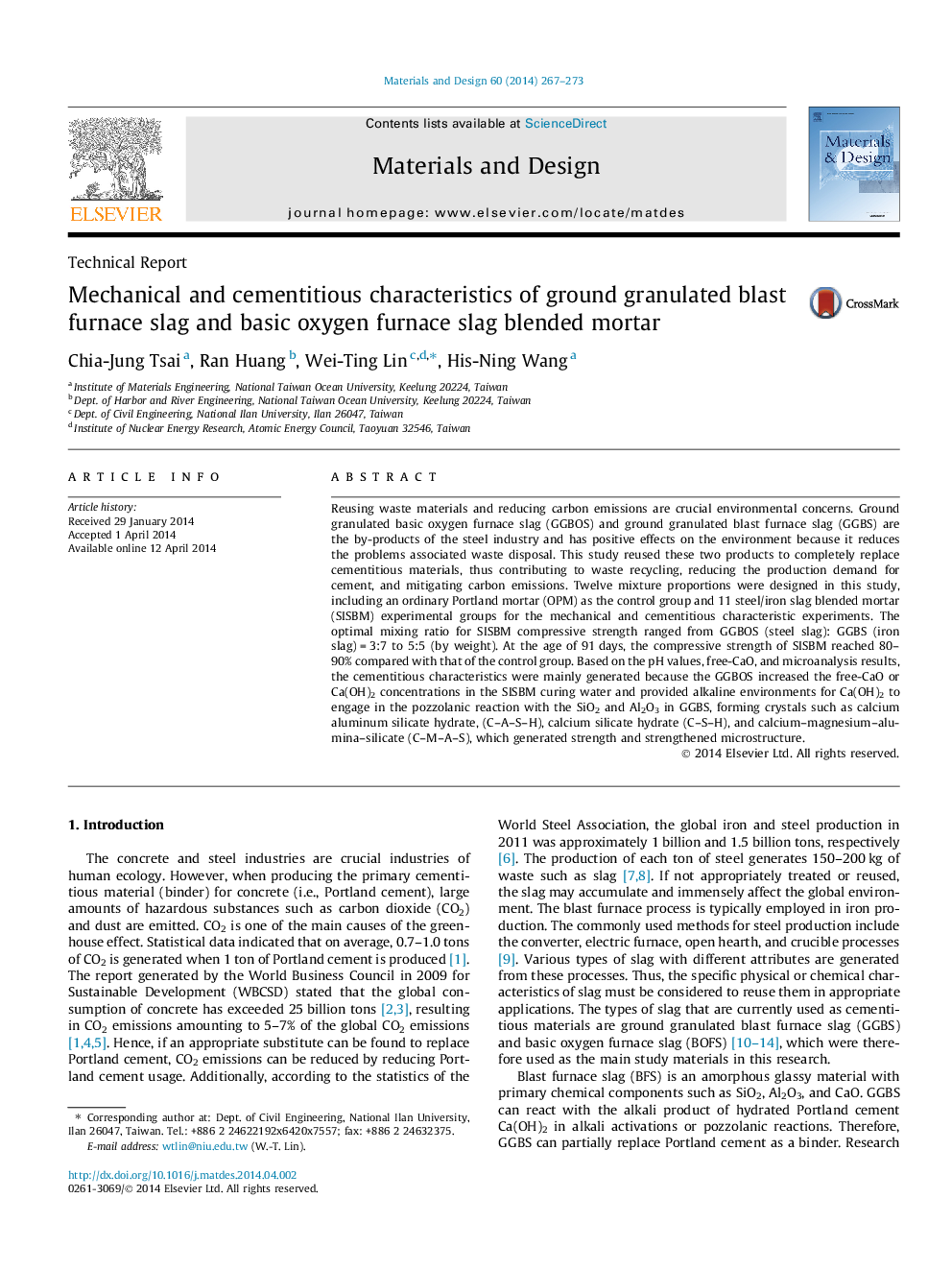| Article ID | Journal | Published Year | Pages | File Type |
|---|---|---|---|---|
| 829194 | Materials & Design (1980-2015) | 2014 | 7 Pages |
•This is an innovative cementitious material.•The cementitious of this study which mixed some steel slag and iron slag.•The mechanical properties of the new cementitious is like traditional cement.
Reusing waste materials and reducing carbon emissions are crucial environmental concerns. Ground granulated basic oxygen furnace slag (GGBOS) and ground granulated blast furnace slag (GGBS) are the by-products of the steel industry and has positive effects on the environment because it reduces the problems associated waste disposal. This study reused these two products to completely replace cementitious materials, thus contributing to waste recycling, reducing the production demand for cement, and mitigating carbon emissions. Twelve mixture proportions were designed in this study, including an ordinary Portland mortar (OPM) as the control group and 11 steel/iron slag blended mortar (SISBM) experimental groups for the mechanical and cementitious characteristic experiments. The optimal mixing ratio for SISBM compressive strength ranged from GGBOS (steel slag): GGBS (iron slag) = 3:7 to 5:5 (by weight). At the age of 91 days, the compressive strength of SISBM reached 80–90% compared with that of the control group. Based on the pH values, free-CaO, and microanalysis results, the cementitious characteristics were mainly generated because the GGBOS increased the free-CaO or Ca(OH)2 concentrations in the SISBM curing water and provided alkaline environments for Ca(OH)2 to engage in the pozzolanic reaction with the SiO2 and Al2O3 in GGBS, forming crystals such as calcium aluminum silicate hydrate, (C–A–S–H), calcium silicate hydrate (C–S–H), and calcium–magnesium–alumina–silicate (C–M–A–S), which generated strength and strengthened microstructure.
